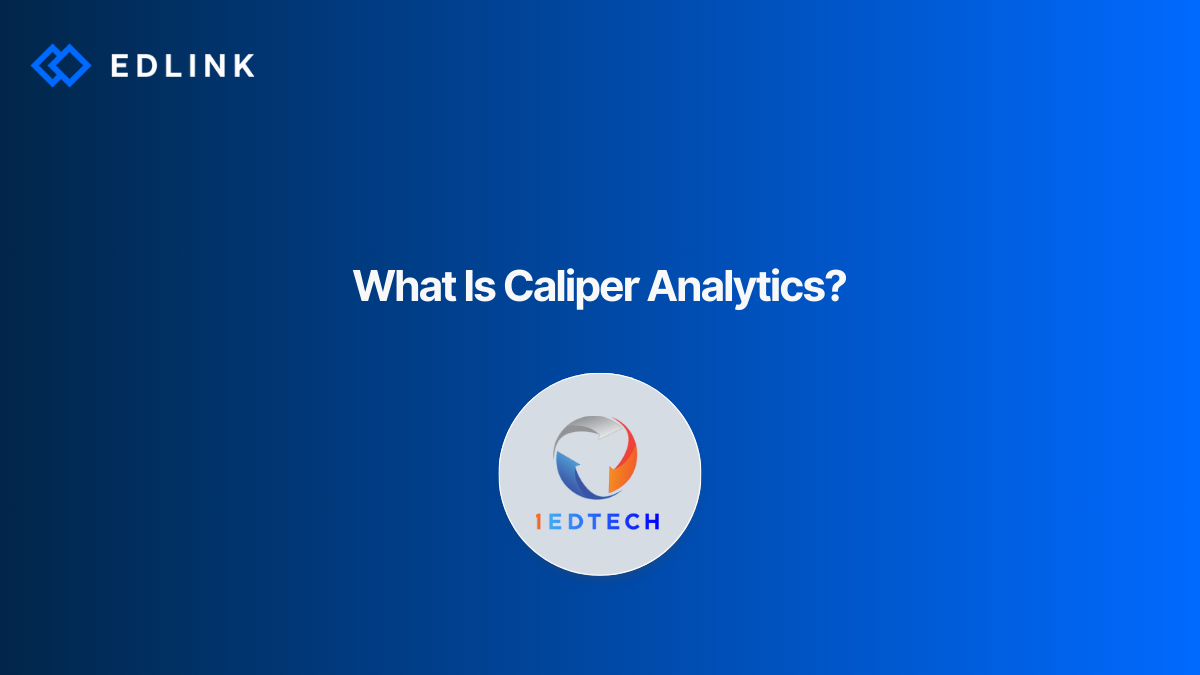Caliper Analytics® is a standard from the IMS Global Consortium® which enables institutions to collect learning data from digital resources. This data can be used to improve student recruitment and retention plans, curriculum design, and student intervention measures.
How does the Caliper Analytics Specification Work?
The Caliper Caliper Analytics Learning Measurement Framework works through the SensorAPI™ and Metric Profiles. The Sensor API defines the learning interactions between the application and the Framework. The goal of the Sensor API is to provide developers a common method of recording learning that can be shared across different applications and platforms. The IMS Global Consortium provides implementations of the Sensor API in Java, JavaScript, PHP, Python, Ruby, and .NET.
Metric Profiles provide models for how to track student activity across different types of interactions. For example, the Assessment Profile describes how students engage with a quiz and records relevant data, such as how long a student takes to complete the quiz and which questions are skipped. Standardizing these profiles allows applications to analyze student interactions across different metrics. The full list of Metric Profiles can be found at the IMS Global Consortium.
Caliper Analytics also work in tandem with the LTI® and QTI® standards. Content that has been developed in the LTI or QTI standards can leverage Caliper Analytics so that events in the tool can be defined with the SensorAPI.
Caliper v1.1 is the most current certified version of the Caliper Analytics standard. Caliper v1.2, which supports several new Metric Profiles, is in development. Its beta release is available to IMS members for review.
Real World Examples
Caliper Analytics was developed to standardize interactions between students and software. Let's say that a student launches an LTI tool from their LMS with Caliper Analytics enabled. The SensorAPI records this event. Now, let's say the tool contains questions for the student to complete. If that's the case, the SensorAPI could record data, such as:
- When the student navigated to the assessment;
- When the student navigated away from the assessment;
- Which responses were selected when answering a question; and
- Which order the student answered the questions.
All of this data can then be analyzed. For example, if several students are taking longer than expected to complete an assignment, the developer of the assignment may want to make it easier or communicate information more effectively. Additionally, if several students are missing the same question, the developer may want to rewrite the question. Furthermore, a single student is taking too long to answer certain types of questions, measures to intervene and help the student could be taken. Since Caliper Analytics standardizes how interactions are defined, this information can be combined and analyzed with any other tool that used Caliper, too.
Read More on Data Standards
Here are other articles we’ve written on Data Standards to help you on your integration journey:
- What’s the difference Between API and LTI Integration
- Updated | What is “LTI Integration”?
- If I work with Edlink will I automatically be OneRoster/LTI/Clever (etc) Certified?
- The Challenges of Using the LTI Standard for K12 and Higher Ed LMS Integrations
- The History of LTI
Want to Learn More about Edlink?
If you're looking for a partner who can help guide you through developing LMS integrations (like these), then let’s introduce ourselves. We’re Edlink!

